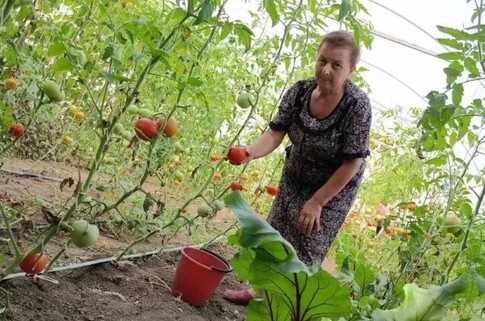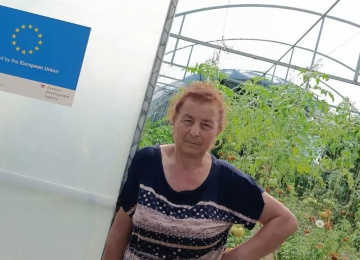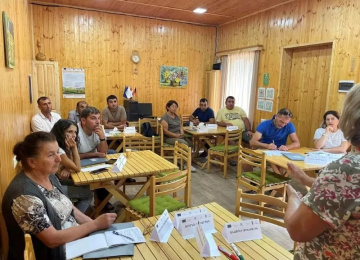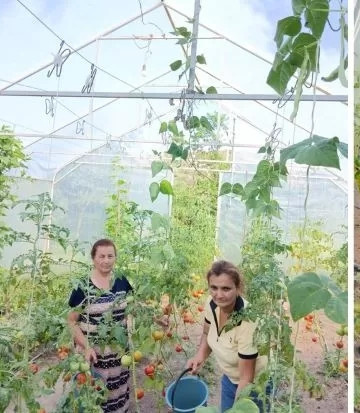
Sixty-nine-year-old Sonichka Bayramyan is from Voskepar village of Tavush Marz. The distinguished teacher who taught chemistry and biology in the village school all her life is also an experienced agriculturist. She says that parallel to pedagogy, she has always engaged in various agricultural activities: land cultivation, animal husbandry, and beekeeping. Today, she is one of the staunch supporters of the introduction of innovative methods in agriculture and is particularly proud to present her greenhouse recently launched with the support of the Green Agriculture Initiative in Armenia (EU-GAIA) project co-financed by the European Union and the Austrian Development Cooperation.
Looking back, the 69-year-old agriculturist, who has been engaged in beekeeping until now, notes that she has always been engaged in activities that meet the standards of green agriculture, but she felt its importance only recently, after participating in the European Union -funded Green Agriculture Initiative in Armenia (EU-GAIA) project implemented by the Austrian Development Agency.
As a result of the grant competition announced by the European Union GAIA project, her project on establishing a greenhouse with the economical use of natural resources is recognized as the winner and Sonichka receives technical support equivalent to EUR 10,000 in the form of a 130 square meter greenhouse equipped with ventilation and drip irrigation systems, a 7 kW solar system and a small motor block intended for soil cultivation.
The example of that greenhouse aimed at the development of green agriculture has inspired many people in the village. Some are interested in similar programs with the desire to apply in the future, some have begun to appreciate green agricultural products more and prefer to shop not at the markets of Noyemberyan or Ijevan, but at the Bayramyans’ greenhouse, and some simply apply to the innovative agriculturist in the hope of getting to know the nuances of running green and healthy agriculture.
The successful farmer in her turn tries to be useful to her fellow villagers. Aid is sometimes also in-kind, in the form of greenhouse-grown seedlings or crops.
"This year, for example, the hail destroyed the seedlings of the villagers. Since our greenhouse was not damaged by the hail, I gave the vegetable seedlings I grew to the whole village free of charge," says S. Bayramyan.
She is certain that there is a need for agricultural development programs and green farming skills in all the villages of the republic, but they are of the most vital importance for the borderline and frontier settlements.
Now, when the hopes for big projects in Voskepar have decreased due to the border tension, they are trying to build the village with small projects, through mutual aid and supporting one another. The distinguished educator and innovative agriculturist, who became the senior adviser to the women of the village, says that the most important thing for the farmer and agriculture is to do everything on time.
"If you leave today's work for tomorrow, you will not have a harvest tomorrow either. Everything should be done on time. It is not for nothing that the popular saying says: one spring day feeds a year."







